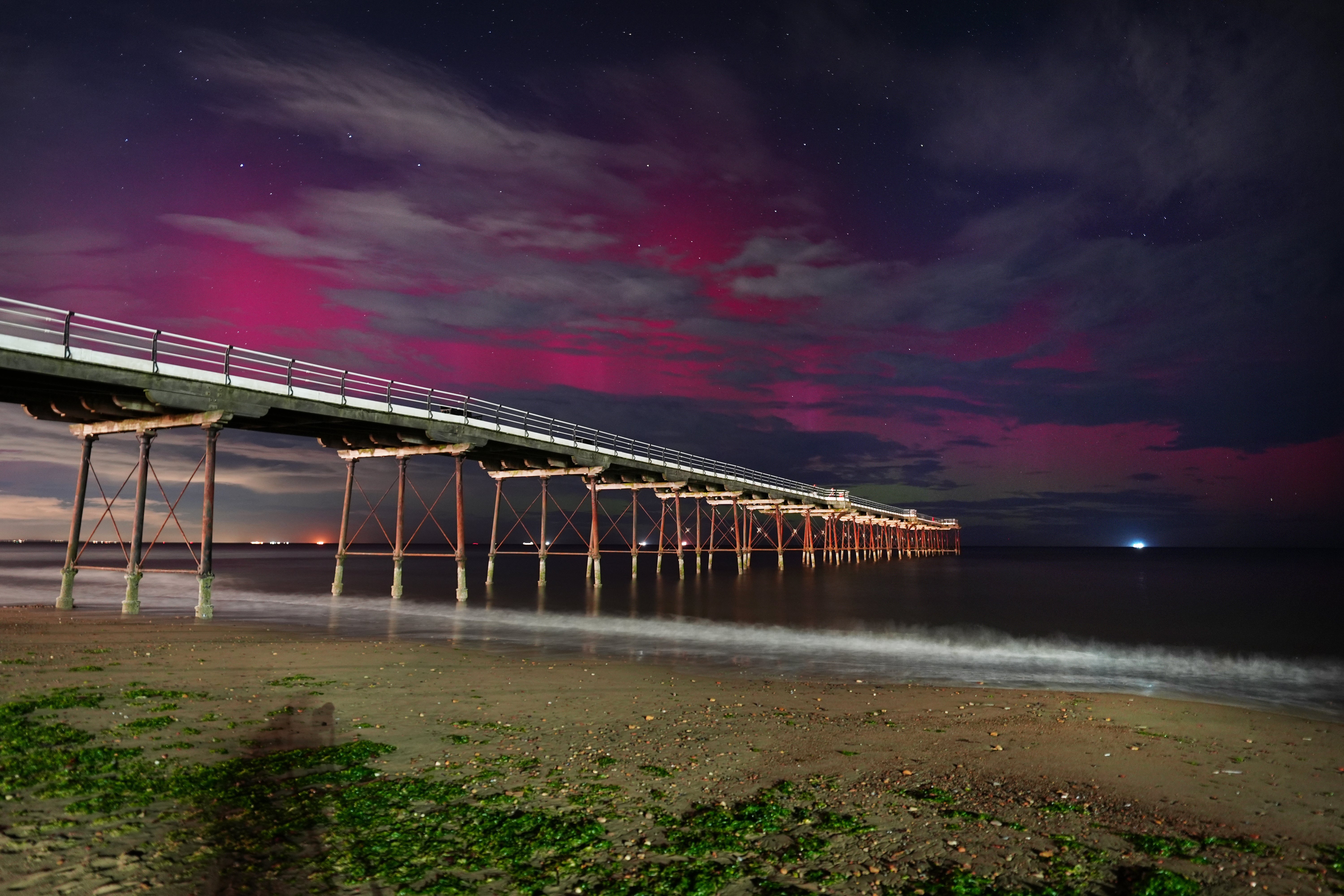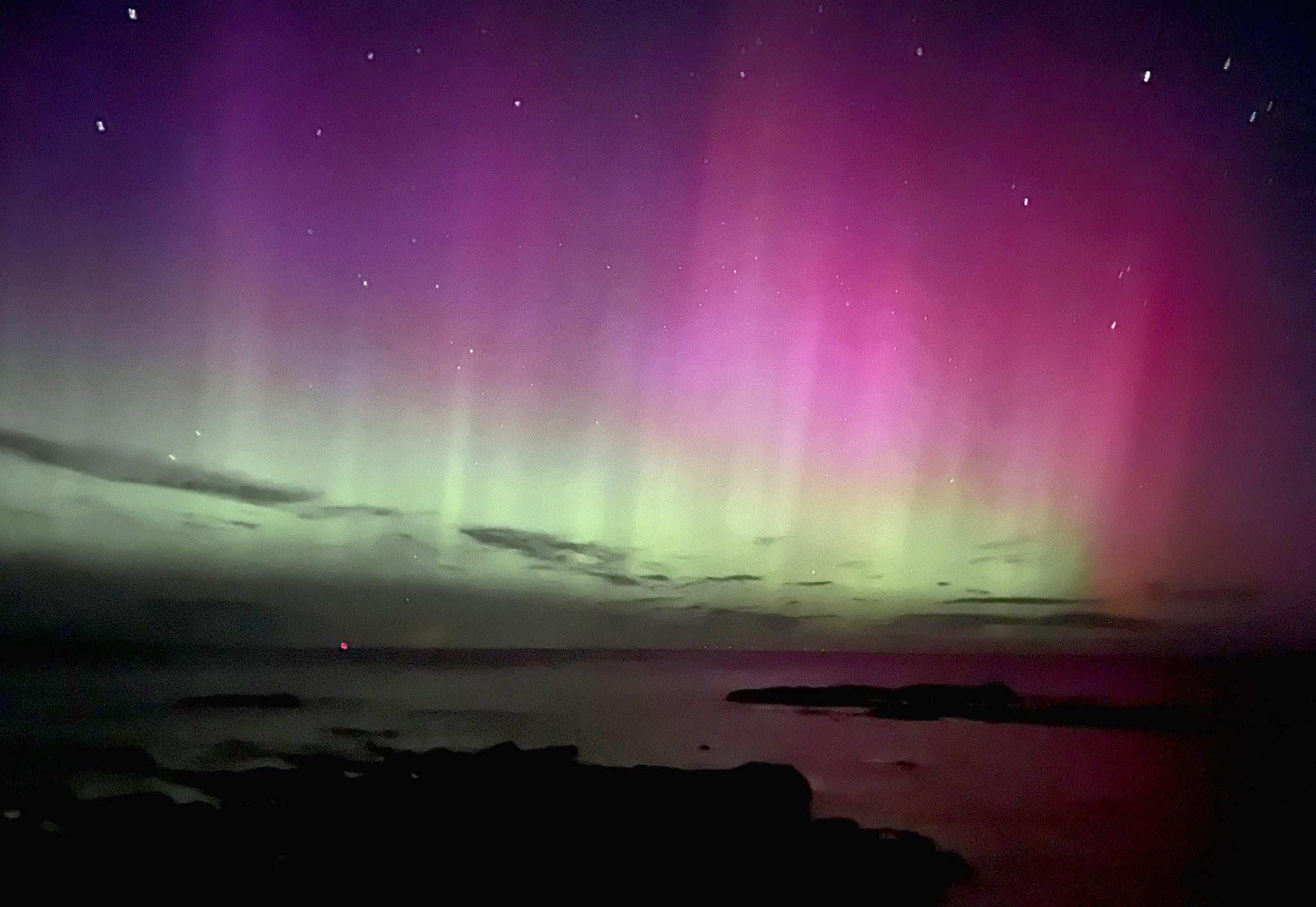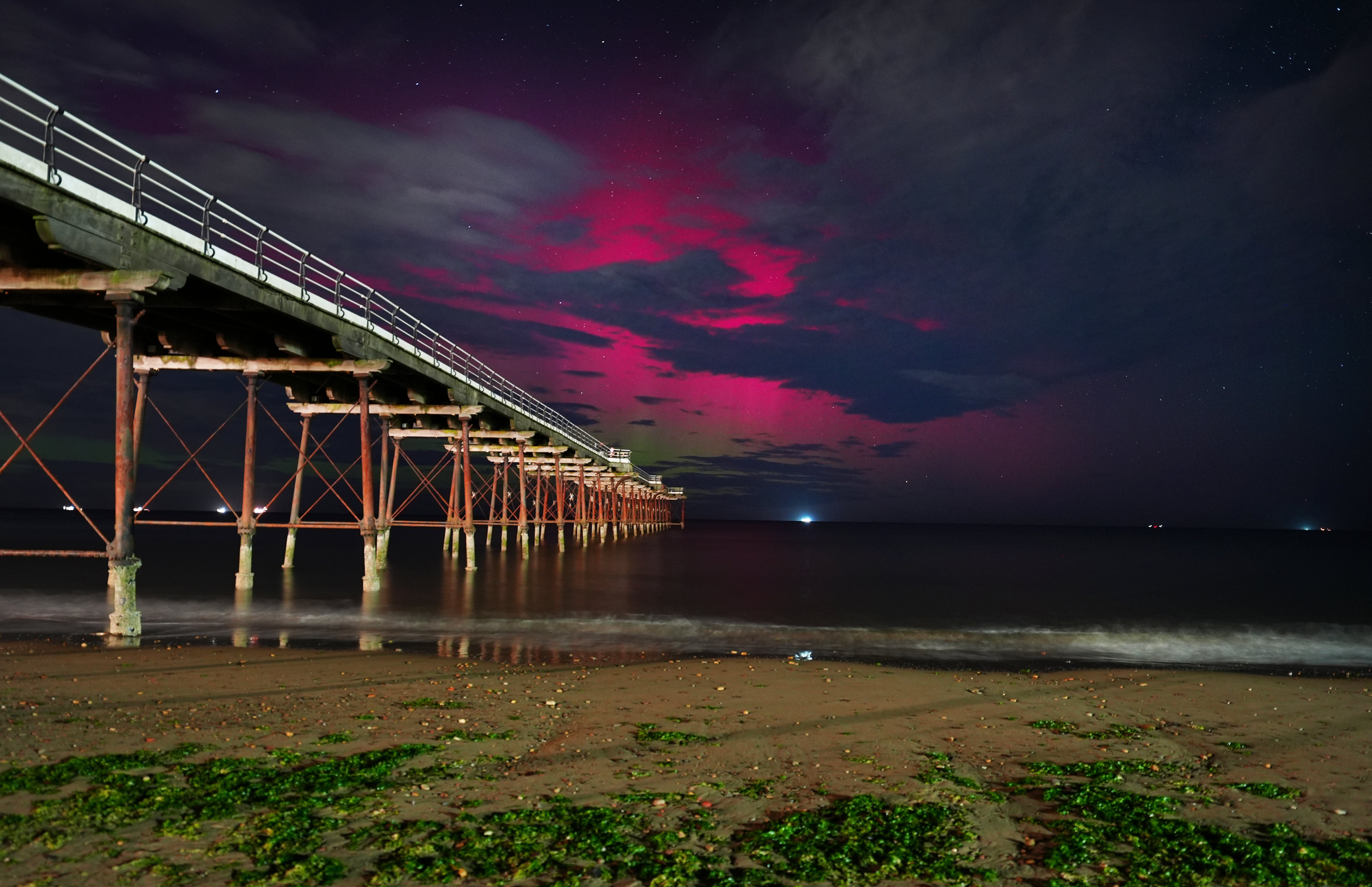A powerful solar storm meant the Northern Lights were visible across parts of the UK and Ireland overnight, with them possibly being visible again on Tuesday.
The solar phenomenon is typically most visible in the auroral oval – a ring of light around Iceland and the polar caps – although it can sometimes be witnessed in the North. Only under rare and more severe space weather conditions can the lights be seen throughout the whole of the UK.
Stargazers on Monday night reported sightings of the colourful spectacle across north-east Scotland, northern England and the Midlands – and stretching as far south as West Cork in Ireland. The Met Office said the resulting geomagnetic activity could make the aurora visible further south than usual, provided skies are dark and clear.
Places across North America, such as Alaska and Ontario, also witnessed the solar spectacle, with many residents sharing photos on social media of brightly coloured skies.
Here’s what you need to know about your chances of seeing the Northern Lights on Tuesday night.

How to see it
While it is rare to see the Aurora Borealis in the UK, northern regions have a greater chance of seeing the solar experience than in the South.
Night-time viewing conditions are set to worsen across the UK on Tuesday and Wednesday, but northern Scotland and England are forecast to have the clearest skies. Viewing conditions could still be inhibited because of a waxing gibbous moon, between a half and full moon, which could disrupt clear views of the aurora in areas with additional light pollution.
Photography can help to see the colourful spectacle, with the Royal Photography Society advising people to aim for a clear sky with no wind, and find a “dark skies” location with low light pollution.
“Look for an interesting foreground, such as trees, which will create silhouettes in the sky,” the society advises. “Or use a lake or water, which will create reflections and make for a more interesting picture. In time, you can experiment with adding light from a strobe or LED lamp to bring out detail in the foreground.”
When to see it

According to the Met Office, the Northern Lights are most active during the Equinox and Solstice, around March and April, or September and October. The best chance of seeing the aurora was Monday night, but there is also a small chance on Tuesday and Wednesday.
For those in more marginal locations, further south or in urban areas, light pollution will play a significant role in determining whether the aurora can be seen.
Krista Hammond, Met Office space weather manager, said: “Forecasts can change rapidly, so we encourage the public to stay updated with the latest information.”
According to the British Geological Survey, the best chances of seeing the aurora are generally around the hours of midnight, between 10pm and 2am, however it may appear any time during the night, depending on geomagnetic activity.

Why is it happening
Monday’s impressive display was caused by a fast-moving coronal mass ejection – a release of plasma and magnetic field from the Sun’s corona – late on Saturday, forecast to reach Earth between Monday and early Tuesday.
The forecaster said that following the coronal mass ejection’s arrival, “a significant enhancement of the auroral oval is likely,” potentially continuing into Wednesday. These ejections can travel at speeds of up to several million kilometres per hour and, when directed towards Earth, can interact with the planet’s magnetic field. This interaction can trigger geomagnetic storms, which in turn can produce displays of the aurora.
The colours of the Northern Lights are created when charged particles collide with other molecules in the atmosphere, emitting light to give up extra energy.
The colour of the light depends on the molecules affected, according to the British Geological Survey. Oxygen, nitrogen and other gases in the atmosphere have their own particular colours which result in the range of blues, greens, yellows and reds observed in the aurora.









